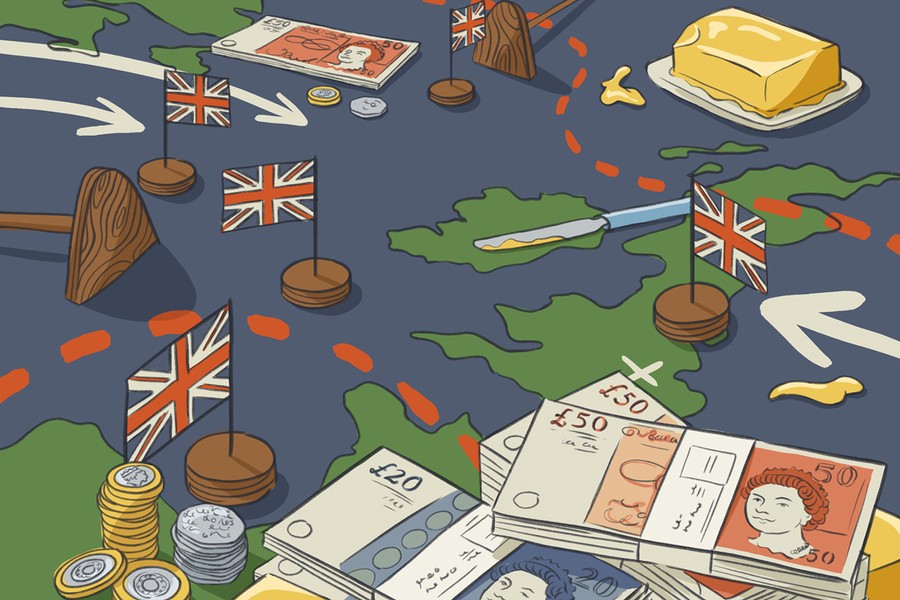The Romans were warmongering people who owed much of their success to the relative sophistication of their military. It is therefore no surprise that in both imperial and republican Rome, military wages consumed over half of the government’s revenue.
After Rome, the next big European inflection point was the Gunpowder revolution in the 15th century. In the 1530s and 40s, under the bellicose Henry VIII, military spending made up c.30% of England’s government expenditures. This jumped further to average an eye watering 75% between 1685 and 1813, largely a reflection of the increasing scale and complexity of warfare, with the British army growing from 57,000 men strong in 1783 to 255,000 just 30 years later.
Defence spending is a product of not just military need, but also of economic strength. Funding armies tends to be less contentious during times of prosperity. From 1870 up until the First World War, Britain’s military burden actually fell to 2.6% of GDP, whilst increasingly significantly in absolute terms. By 1914 though, this had jumped to an average of 22% for the four years of the First World War. This number jumped to a staggering average of 45% for the tenure of the Second World War.
Defence spending is a product of not just military need, but also of economic strength.
After 1945 the green shoots of European détente emerged and since then defence spending has fallen. By 1952 the UK military burden stood at 11%; 70 years later this number now stands at around 2.2%. In this respect though, the UK is not unique.

The UK is arguably more distinct in its seemingly paradoxical wants of reducing military spending whilst retaining a significant world role. For example, following ‘Sandy’s’ UK defence review of 1957, the amount being spent on defence was peeled back but the UK continued to maintain substantial forces in the Far East, the Persian Gulf, Africa and the Mediterranean. Financial stress also engendered spending caution under the Wilson administration, with defence programmes axed or reduced, in spite of the UK’s presence in the Far East, the Gulf and Mediterranean persisting.
Connected to this is another theme which resonates acutely today: that defence reviews focusing solely on spending have failed to prepare the UK adequately for its challenges and commitments. Defence spending is invariably much easier to justify in times of perceived threat, yet history would show that defence spending myopia can be very costly. The UK learned this when the Argentinian invasion of the Falkland Islands highlighted the vulnerabilities that had developed as a result of cuts. Irrespective of this, following the UK’s exit from Afghanistan the UK’s military burden fell. Since then though, the rightful rise of ESG has also put defence out of favour in the Square Mile.
Whilst the City and the government distanced themselves from defence, this actually seemed increasingly at odds with public opinion. In a YouGov poll prior to the Ukraine war, UK citizens voted the sectors of tobacco, gambling, media, oil & gas and banking as all more unfavourable than defence. However, defence companies often achieve worse ESG scores on ratings platforms.
Turning again to YouGov polling, it seems the invasion further improved the perception of defence. Prior to the invasion of Ukraine, 23% of UK adults believed the UK should reduce defence spending. That number has now fallen to 16% and is interestingly now below the 18% who think climate change spending should reduce. Further polling shows that those strongly supporting NATO has jumped from 33% to 50% following the invasion.
The invasion of a democratic European nation has, it seems, strengthened the UK’s resolve and demonstrates a want to play an active role in world affairs. Importantly, the invasion seems to have also been enough to move the Square Mile and Westminster in line with public opinion. The objection to defence in the City stemmed predominantly from a view that investors shouldn’t fund weapons that are used in wars. Many investors now argue that spending is going forward is for defence and not offense, and so can be justified from an ESG perspective.
It is worth noting however that, at least in terms of government spending, Ukraine has catalysed rather than initiated this trend. The UK military burden had been rising for a few years preceding the Ukraine war and the invasion moved not only the UK but also wider Europe. The reversal of decades of cautious German foreign policy with a move to spend at least 2% of GDP on defence is indicative of this.

The appetite for UK defence spending then, seems to have changed materially amongst investors, governments and the public alike. This is not hugely surprising though, given the Russian invasion, and follows patterns seen since the Roman occupation. The invasion has also illustrated the UK public’s desire to retain a significant world role. In response to these obligations and desires, I hope that when the guns eventually quiet in Ukraine, the UK can learn from its recent history and find a space for defence alongside the butter.
Illustration by Adi Kuznicki





